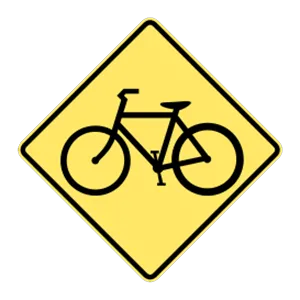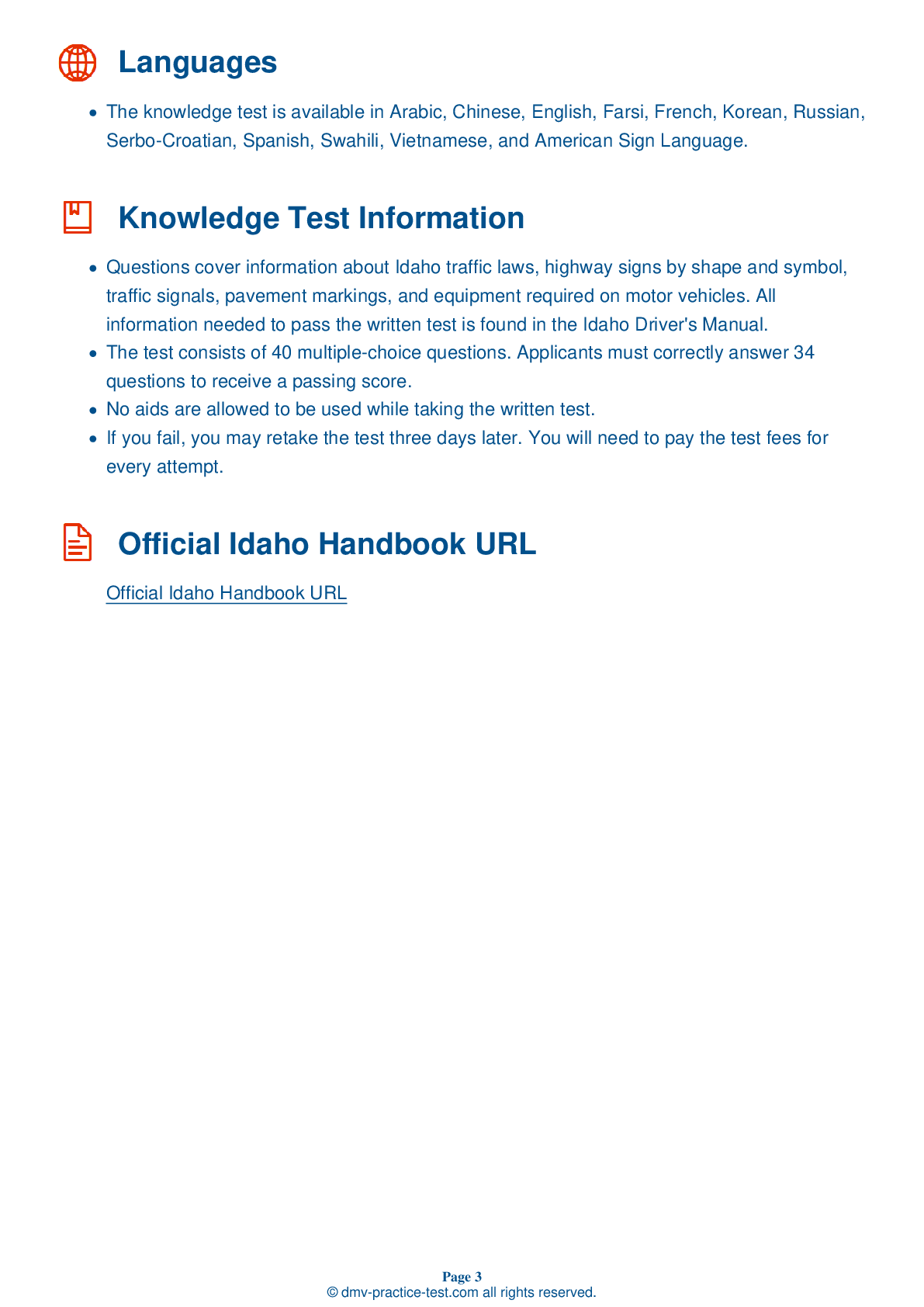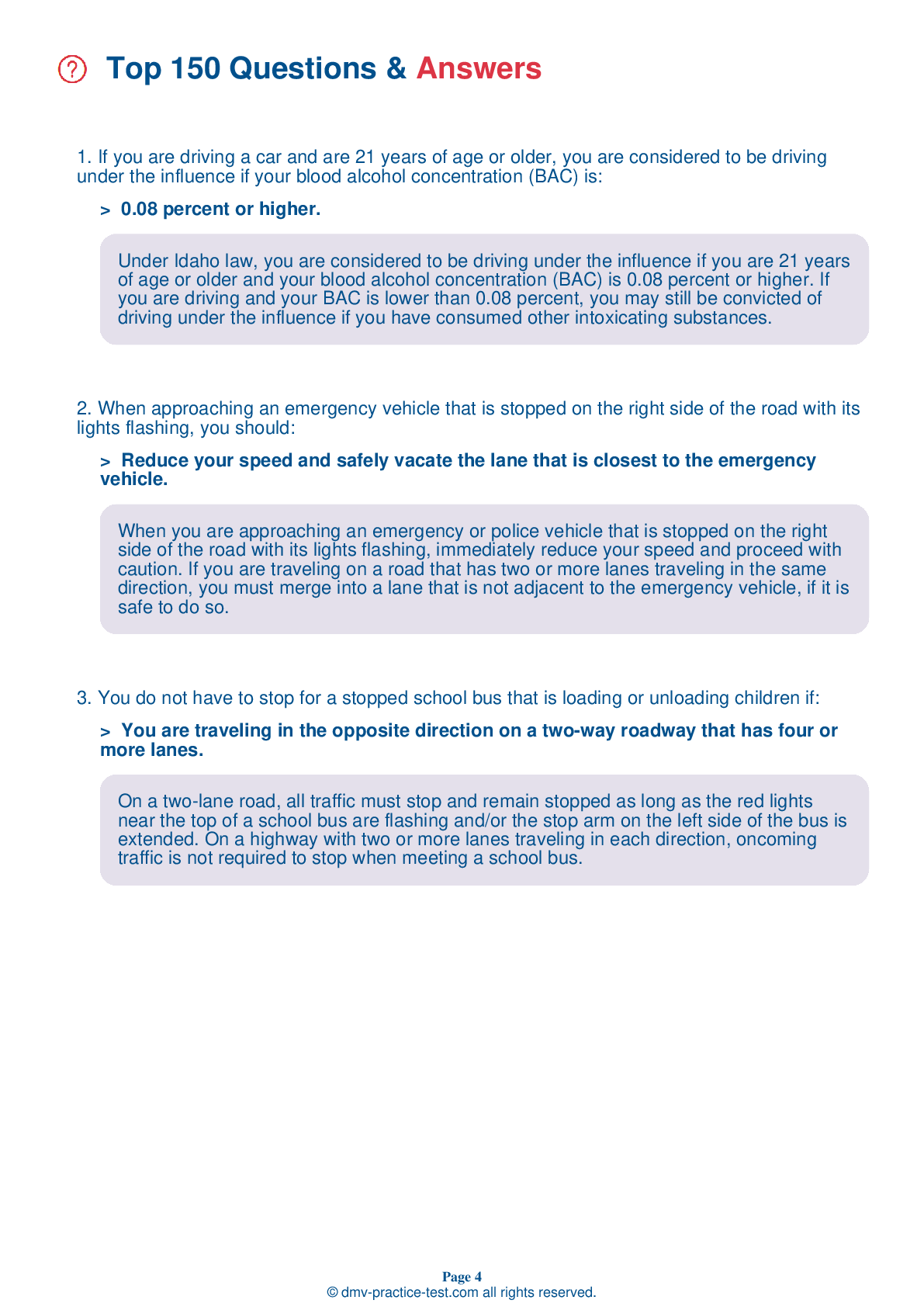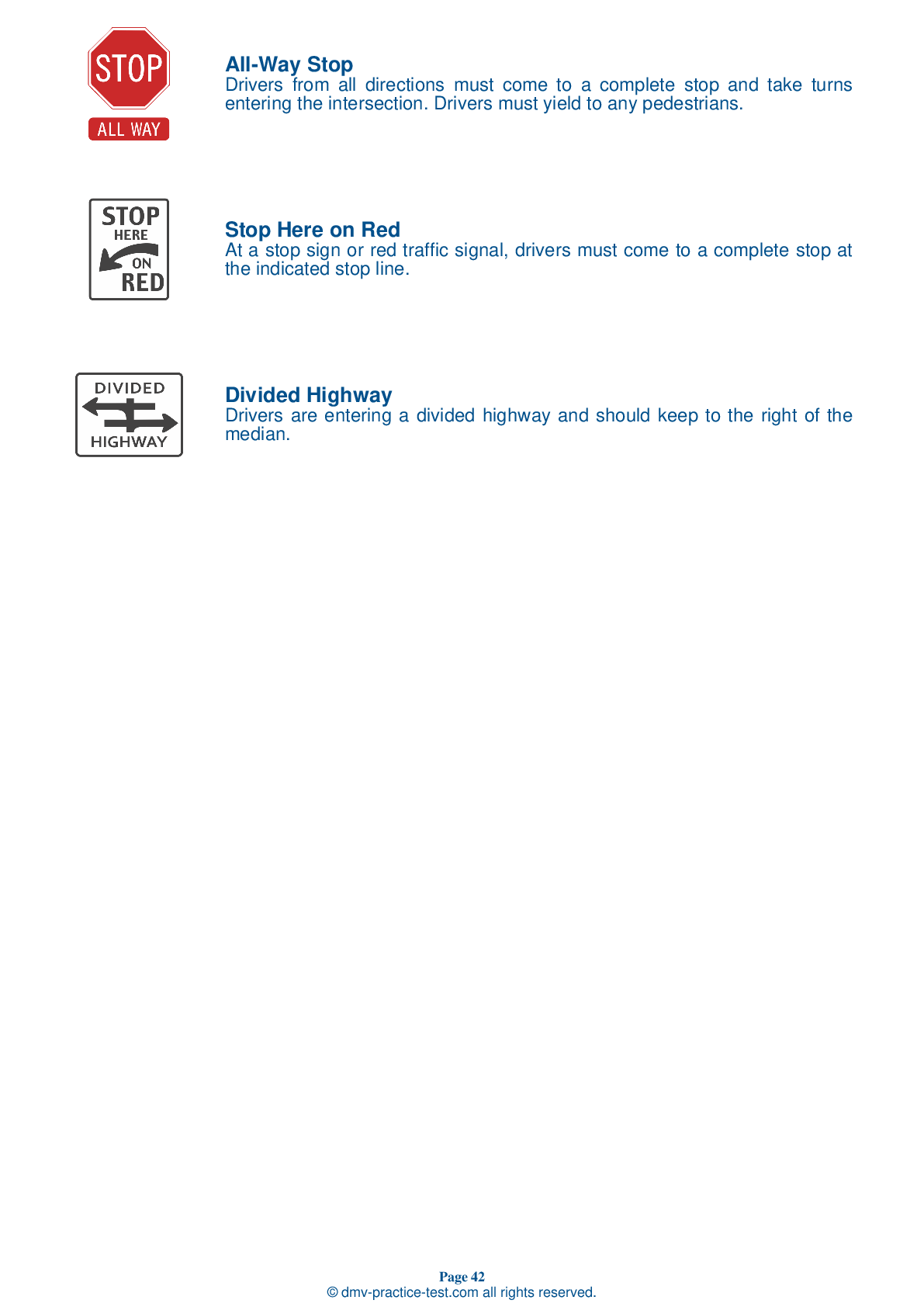FREE Idaho DMV Practice Test #6 Page 3 of 5
This set of Idaho DMV practise tests has been updated for January 2025. It includes questions based on the Idaho Driver Handbook's most significant traffic signs and regulations for 2025. Use actual questions that are very similar (often identical!) to the DMV driving permit test and driver's licence exam to study for the DMV driving permit test and driver's licence exam.
On the practise exam, each question gets a tip and explanation to help you remember the concepts. The written component of the official DMV test will include questions about traffic rules, traffic signs, and driving statutes, as well as information from the Driver Handbook.
To obtain a passing grade, you must correctly answer 34 of the 40 questions. Take our DMV practise exam to help you prepare for your Idaho instruction permit or driver's licence.
The DMV exam is available in several languages.
Using any kind of testing assistance will result in an automatic fail, and the DMV may take additional action against your driver's licence, so stay away from it.
17 . When approaching a steady green traffic light, drivers should:
When approaching an intersection with a steady green traffic light, yield to pedestrians in the crosswalk and vehicles still in the intersection. You may continue driving, but should approach the intersection at a speed that will allow you to slow down and stop if the light changes before you get there.
18 . You may drive around or under a gate that is being lowered or raised at a railroad crossing:
Flashing red lights, lowered crossing gates, and/or bells at a railroad crossing mean that you must come to a complete stop. You must not go across the tracks until the lights and bells have stopped and the crossing gates are completely up. Do not drive around or under a gate that is moving up or down.
19 . This sign means:

This sign provides advance warning that bicycles may be present.
20 . What should you do when an emergency vehicle is approaching while displaying flashing red or blue lights?
You must yield the right-of-way to all emergency vehicles using a siren, air horn, and/or flashing red, blue, or white lights. Where possible, you must pull over to the right edge of the road. If you are in an intersection, drive through the intersection before you pull over.
21 . If worried, nervous, angry, or crying, a driver:
You may not be able to drive well if you are worried, excited, crying, angry, or depressed. Emotions can distract you from your driving because your mind is focused on something else. Take time to calm down and get focused before driving.
22 . If your car starts to skid, turn your steering wheel:
If your vehicle goes into a skid, you should turn the steering wheel in the direction you want the vehicle to go. As soon as the vehicle begins to straighten out, turn the steering wheel back the other way.
23 . What kinds of drugs can affect your driving ability?
Many kinds of drugs can impair your ability to drive. This includes illegal drugs and legal prescription or over-the-counter medications. It can be a criminal offense to drive while impaired by any drug.
24 . To help prevent crashes, you should:
Crashes often happen because one driver does something that other road users are not expecting. You should communicate with other motorists, bicyclists, and pedestrians by doing things like signaling when slowing down, stopping, or changing direction. Use your emergency signals or horn when appropriate.
Need Car Insurance? No problem!
Compare the best rates in Idaho and find a personalized policy that meets your needs.
1. Are You Currently insured ?
2. Married ?
3. Do you own your Home?
4. Do you have more than 1 car ?
5. Have you or a Family Member Honorably Served in U.S. Military ?
6. Your Name
7. Age
8. Zip code
IMPORTANT REMINDER:Auto Insurance is Mandatory to drive in Idaho. Get covered before you hit the road to avoid any fines.
Ranked by best match



